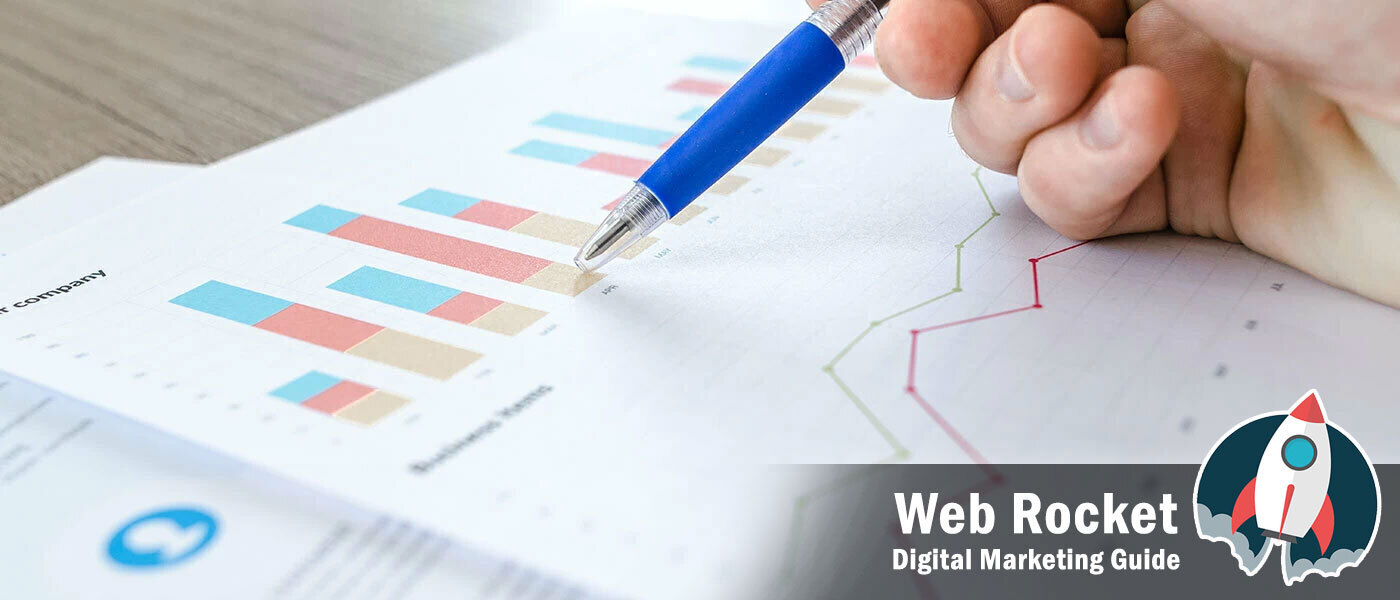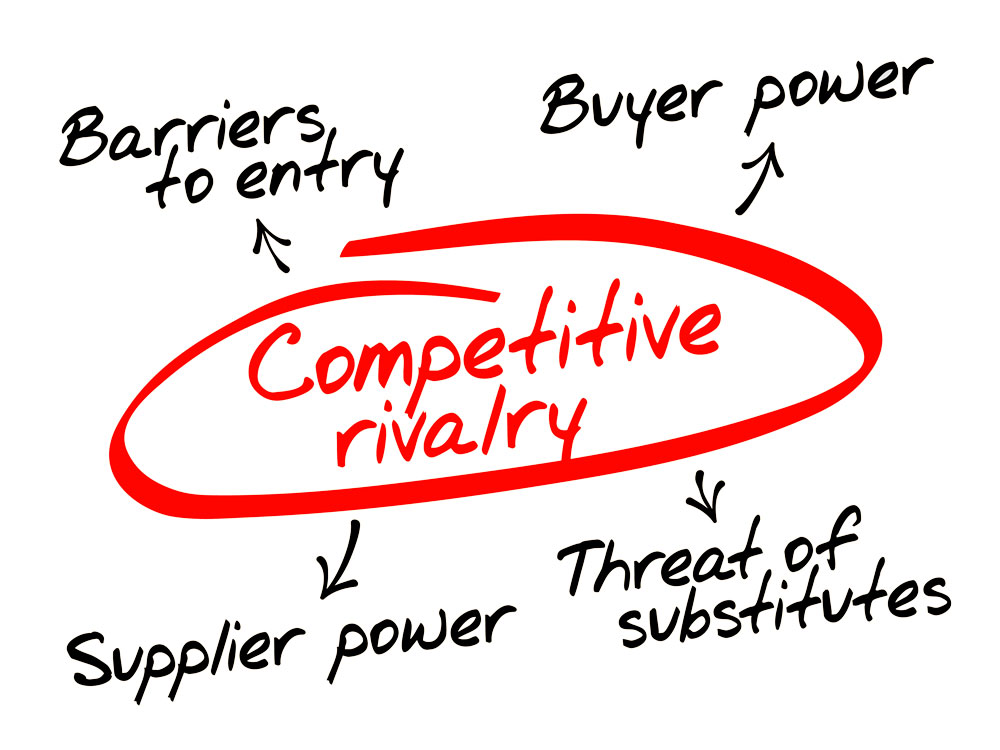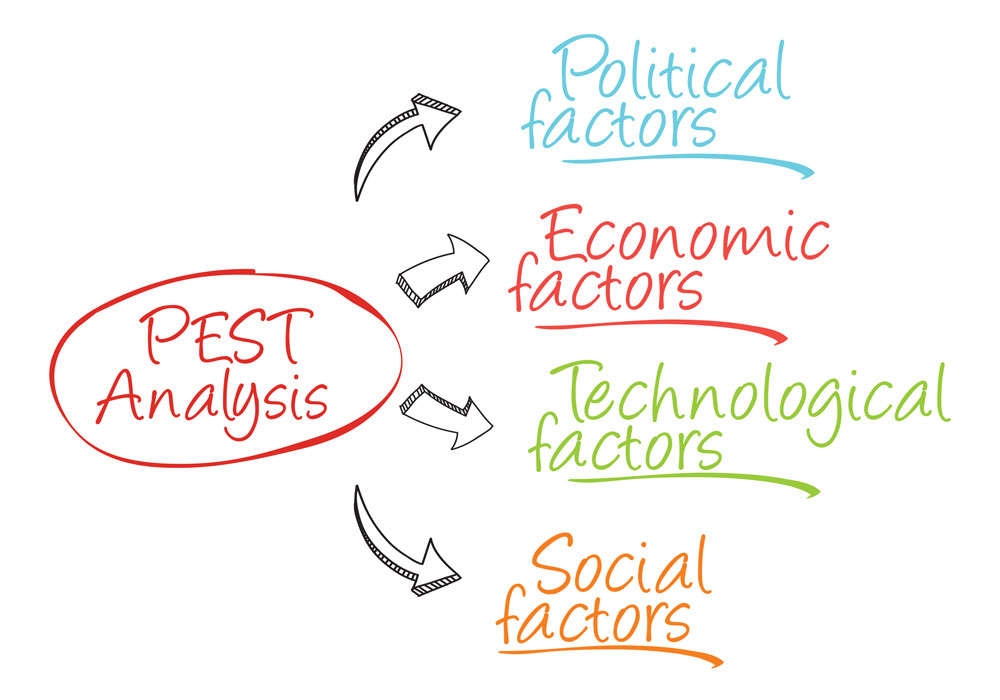Conduct an Industry Analysis for your business

What is Industry Analysis?
Industry analysis is a market assessment tool used by businesses to understand the competitive dynamics of an industry. It helps us understand the direction of the industry and factors which affect it, presenting both opportunities and challenges.
Industry analysis, alongside competitive research, can help to understand a company’s position relative to other participants in the industry. It helps to build an idea of the present and future scenario of the industry.
What can we learn from Industry Analysis?
- Are there any common problems or opportunities facing your industry as a whole?
- Is the industry growing or in decline? Are there new competitors frequently emerging in the industry?
- How much “bargaining power” do suppliers and consumers have within the industry?
- Are there specific avenues to market which suit your industry better than others?
- What are the average price points for your services within the industry, and how do your prices stack up?
- Are there seasonal or circumstantial factors that affect the promotion and sales of your services and products?
- What are the political, economical, social or technological issues that impact the operation of your industry?
With this critical information about our industry, we can better plan the direction and activities of our business.
What are the types of Industry Analysis
Whilst there are a number of techniques for performing industry analysis, we will look at the three most commonly used methods. Between these three methods we can learn about the external factors affecting an industry, competitor evaluations, consumer behaviours and market trends.
- Porter’s Five Forces (The Five Forces Model)
- PEST Analysis (Political, Economic, Social and Technological)
- SWOT Analysis (Strengths, Weaknesses, Opportunities, Threats)
Let's take a look at each of these types of industry analysis and what we can learn from them for our Digital Marketing and Business Planning.
Porter’s Five Forces (The Five Forces Model)
Porter's Five Forces Model is a simple but powerful tool that you can use to identify the main sources of competition, obstacles, and opportunities in your industry.
The model was introduced by Michael Porter in 1980 in his book “Competitive Strategy: Techniques for Analyzing Industries and Competitors.”
When you understand the “forces” affecting your industry, you'll be able to adapt your business and marketing strategy, and stay ahead of the competition.

1. Competitive Rivalry:
Intensity of industry rivalry is the primary focus of the model, and looks at the number of active participants in the industry and their respective market shares. These are a direct representation of the competitiveness of the industry.
You need to consider how many rivals you have? Who are they, and how does the quality of their products and services compare with yours? You will have explored this in more detail in your competitive research.
In an industry where rivalry is intense, companies will adapt their marketing and business strategy, attracting customers by cutting prices and running extensive marketing campaigns to reach a wider audience.
This can make it easy for suppliers and customers to go shop around more and do more market/price comparisons when looking for products and services.
On the other hand, where competitive rivalry is minimal, and there are fewer competitors in your sector, then you'll find that you have a greater customer retention and more “competitive power” within your industry.
Having a clear idea of the nature of competitive rivalry in your industry will assist you with planning your digital marketing strategy. You will be able to plan for potential price adjustments, additional marketing budget and how better to engage for better customer retention.
2. Barriers to Entry:
Also known as Threat of New Entry, this factor refers to the ease with which new firms can enter the market of a particular industry. If it takes little money and effort to enter your market and compete effectively, then rivals can quickly enter your market and weaken your position.
However, if you have strong "Barriers to Entry", such as high start-up costs, or substantial legal requirements, then you can preserve a favourable position and use this to your advantage to maintain your status in the market.
We need to consider if it is relatively easy for a new competitor to gain a position in your industry? Think about the steps you are taking to get set up, or what you had to establish when you first set out in your industry.
How much does it cost, and how tightly is your sector regulated? Do new entrants come and go regularly? Or is the industry dominated by a few, key businesses?
Understanding these barriers to entry will help you plan for the ecosystem of the industry in terms of competitors. For example, if the quality, price point, or advancement of your product or services is at a continual peak, it will be more difficult for a new company to enter and compete with your current status.
3. Supplier Power:
Supplier power refers to how easy it is for your suppliers to increase their prices. If your chosen industry relies on just a few suppliers, they benefit from a considerable amount of bargaining power because you rely on them more for help and service. This puts them in a stronger position and, ultimately, their ability to charge you more and even tie you into expensive contracts. Essentially, it is more problematic for you to change suppliers for better service or prices.
Conversely, the more suppliers you have to choose from, the easier it will be to switch to a cheaper alternative or better service. You may also find, that in industries with a wider variety of suppliers, these companies will be more likely to adapt their own price and service models to be more attractive to you. Don't forget, they are competing too.
How many potential suppliers do you have? How unique is the product or service that they provide? Are they reliable and customer friendly? And how costly would it be to switch from one supplier to another?
Be sure to do your research into available suppliers and evaluate all the options available to you. Stay up to date as more suppliers enter your industry, and be prepared for shifts in costs as suppliers exit.
4. Buyer Power:
Buyer Power refers to the position of your customers within your industry. If the number of buyers is low compared to the number of suppliers in an industry, then they have what's known as "buyer power." If consumers/customers have market power, they are in a position to negotiate lower prices, better quality products, or additional services and discounts.
Think about how many buyers you have and their position in your market.
How big and frequent are their orders? How appealing is it for them to switch from your products and services to those of a competitor? Do your buyers have enough power to dictate and negotiate terms with you?
When you deal with only a few customers, they have more power. You have a greater necessity to meet their needs and requirements on their terms. Buyer power decreases if you have many customers and little competition.
Whilst the key is to always provide the best possible product for your customers, with unparalleled service, it is important to understand the position your buys have. This will assist you in understanding shifts from your company to others and how to minimize this. It can also help you to identify where you may need to compromise with buyers' demands.
5. Threat of Substitution:
This factor refers to the possibility that your customers will find an alternative to your product or service to fulfil their requirement or need. This may not even be a direct competitor but simply an alternate method of achieving their end goal. A substitution that's easy and cheap to make can weaken your position and threaten your profitability.
Let's take the example of a software company that provides automated scheduling for social media posts. Customers pay a monthly fee to be able to schedule their social media activity to be posted out at set times and dates. If the price attached to this product is too high, or the tools and service is not up to what they need, they may seek an alternative. The substitute for this may be to find an alternate, cheaper software that performs the same actions. It may also be to undertake the task manually or outsource it, employing the services of a social media marketer. So whilst not all of these are direct competition, they still pose the Threat of Substation.
Think about what substitutes or alternatives pose a threat to your product or services.
What types of services or products achieve the same end goal as yours? Which are direct competitors, and which are alternative services? What are the advantages and disadvantages of these products in comparison to yours?
Having a clear idea of these factors will assist you with your business and marketing activities. You will be able to better highlight the positive points of your product to your customs. You will also be able to build on your current offerings to maintain your position within the industry.
Competitive Forces Model in Summary
Each of these 5 forces play an important role in how your business performs within your industry. You should factor each of these into your business and digital marketing strategy to help you consider what you can adapt and change to improve your competitive position. The key factors to remember are;
- Competitive Rivalry: the strength and volume of competition in the industry.
- Barriers to Entry: the ease with which new competitors can enter the market
- Supplier Power: the freedom of suppliers to escalate prices or force contracts.
- Buyer Power: the power of your customers to drive down your prices due to volume of competitors.
- Threat of Substitution: the extent to which different products and services can be used in place of your own.
PEST Analysis (Political, Economic, Social and Technological)
The next model we will consider is the PEST Analysis, which stands for Political, Economic, Social and Technological. PEST analysis is a useful framework for analyzing the external environment and factors which can affect the operation of your business.

Political Factors
Here we look at government regulations and legal factors and assess them in terms of their ability to affect the business environment and industry markets.
These include political stability, tax guidelines, trade and market regulations, import restrictions, health and safety regulations, and employment laws.
Economic Factors
Examine the economic issues that may have an impact on your business. Consider factors like inflation economic growth, recessions, interest rates, unemployment rates and policies, and the business ecosystem cycle.
This may differ across different countries, so be sure to scope this out across your own country of operation, but also be aware of countries you supply to.
Social Factors
Analyze the socio-economic environment of the market. You will need to consider customer demographics, cultural limitations, lifestyle attitude, and education.
This will help you to understand how consumer needs are shaped, how they change over time, and what drives them to purchase.
Technological Factors
Technology can either positively or negatively impact the introduction of a product or service into a marketplace. You should consider technological advancements, lifecycle of technologies, the role of the Internet, and the spending on technology research by the government.
Think about how the available and developing technology will impact the running of your business and what can be used to your advantage.
PEST Analysis in Summary
Every industry is different. Some factors may not affect your business to the extent that it would with others, however, it’s beneficial to have a well-rounded view of the many factors that could affect you. Along with the ones that will affect you.
- Political Factors: Regulations & laws that may impact your business.
- Economic Factors: Monetary funds, sales, revenue, and profits.
- Social Factors: Influences on the behaviour of your target market.
- Technological Factors: Impact of reliable, accessible technology on the running of your business.
SWOT Analysis (Strengths, Weaknesses, Opportunities and Threats)
A SWOT analysis is a simple technique for assessing these four key aspects of your business. It serves to reflect on both internal and external factors, highlighting what your company does best currently, and to outline a successful strategy for the future.
This analysis can also reveal flaws in your current way of working, promoting and operating, giving you insight into how to remedy these issues. SWOT can also reveal areas of the business that may impact growth and progression, or that your competitors could exploit if you don't protect yourself.

Strengths
What does your company do well? What gains a positive reaction from customers? What actions are creating a positive impact on your business? Are there unique resources or features of your business which stand out amongst your competitors?
These are just a few of the considerations for the strengths of your business. Evaluate everything that you are currently doing well. This could include aspects such as customer service, staff training, keeping down costs, promotional activities, product/service quality. You should look at your company in fine detail. For example, do customers report that your staff are friendly, informative and helpful? Do users have a positive experience on your website? All of these factors are important and contribute to your overall strengths if they are executed effectively.
Weaknesses
What does your company need to improve? Are there any aspects of your business that cause complaints or lower customer retention rates? Where do you struggle for resources, engagement or customer acquisition? Are your staff performing to optimum standard and is the quality of your services and products satisfying your customers?
It is just as important to understand your weaknesses as a business to devise actionable steps to improve on them. Again, it's important to look at your internal processes as well as reactive factors such as customer satisfaction and brand engagement. What other people see as weaknesses will potentially be different from what you see, so be sure to collect valuable opinion based information and put it to good use to improve.
Opportunities
What opportunities are available for you to enhance your strengths and improve your weaknesses? What trends are currently in play which may benefit your business? What resources and facilities may enhance your offering?
There will always be a number of positive factors that can assist in the growth and development of your business. It is important to be aware of what is happening in your industry and supporting landscape to drive your business forward. Think about promotional opportunities that you may be able to take advantage of to demonstrate your strengths. Possible training and support that may improve your weaknesses. There may be tech or IT systems available that may improve your customer service and management. Streamlining and improving your processes is always a positive action which can ripple benefits through your company.
Threats
What factors or activities can pose the threat of a negative impact on your business? What are your competition doing that may overshadow or impact you? Are there industry trends that may affect your sales or customer acquisition? Are there new products coming to market that may replace your own?
Keeping an eye on possible threats to your business is extremely important. Being aware of both internal and external factors that may cause problems allows you to plan to combat these issues. Threats can exploit your current weaknesses and may be detrimental to your existing strengths, so be sure to evaluate what is going on around you and have a clear idea of what you can do to reduce any impact on your business.
SWOT Analysis in Summary
Understanding the dynamics of both internal and external factors impacting your business is key. With a strong, detailed SWOT analysis you can plan, build and perform much more effectively.
- Strengths: What are you currently doing well?
- Weaknesses: Where do you need to improve?
- Opportunities: What is available to you to help build and improve your business?
- Threats: What factors may impact your business in a negative way?
Industry Analysis Summary
As you can see from these 3 key examples of industry analysis, there are a broad scope of factors that impact the successful running of any business. It is important to have a rounded understanding of these factors to enable us to build our business, perform to our optimum and deliver our services to customers effectively.
This information also assists us in planning for the future and how to combat issues which may arise. We highly recommend conducting the industry research for each of the 3 methods featured in this article as part of your Business Plan.
Blog Categories
Become a guest blogger
Do you have an article to post about Digital Media & Marketing? Maybe Design or Social Media is your passion?
If so we'd love to hear from you.
Looking for a new website?
If you are looking to develop a new website for your business, why not get in touch and have a chat through your project.
We'll provide you with a free quote and website specification to assist with your planning.



















